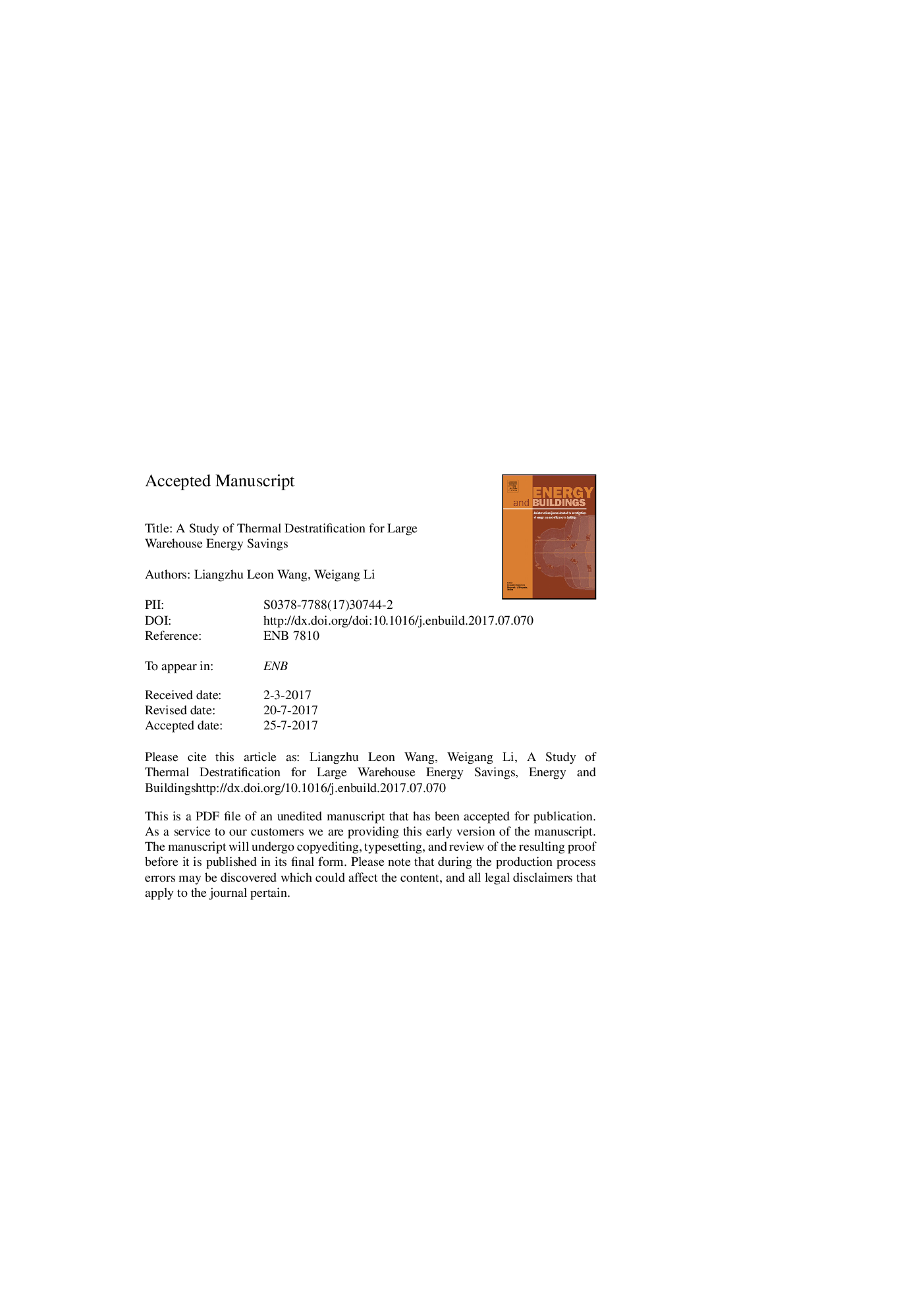| Article ID | Journal | Published Year | Pages | File Type |
|---|---|---|---|---|
| 4918976 | Energy and Buildings | 2017 | 24 Pages |
Abstract
Thermal stratification in large warehouses is a common phenomenon in winter, especially for cold climates. Buoyancy-driven warm air tends to move upwards towards ceilings creating vertical temperature gradients with upper higher temperatures, and consequently leading to excessive heat losses through roofs. These warehouses therefore require thermal destratification through certain air mixing strategies, the selection of which often relies on engineering rules of thumb and experiences but can be better determined through combined experimental and numerical approaches. This paper investigated different thermal destratification methods in two industrial warehouses based on field measurements and CFD simulations with the focus on the quantification of thermal stratification, and the suitable methods modeling air mixing devices, e.g. ceiling rotating fans and bucket fans. The numerical models were first validated by field measurements and then used to simulate different destratification strategies and to compare associated energy impacts. The CFD methods for modeling air mixing devices and their performances can be applied to other similar cases.
Related Topics
Physical Sciences and Engineering
Energy
Renewable Energy, Sustainability and the Environment
Authors
Liangzhu Leon Wang, Weigang Li,
